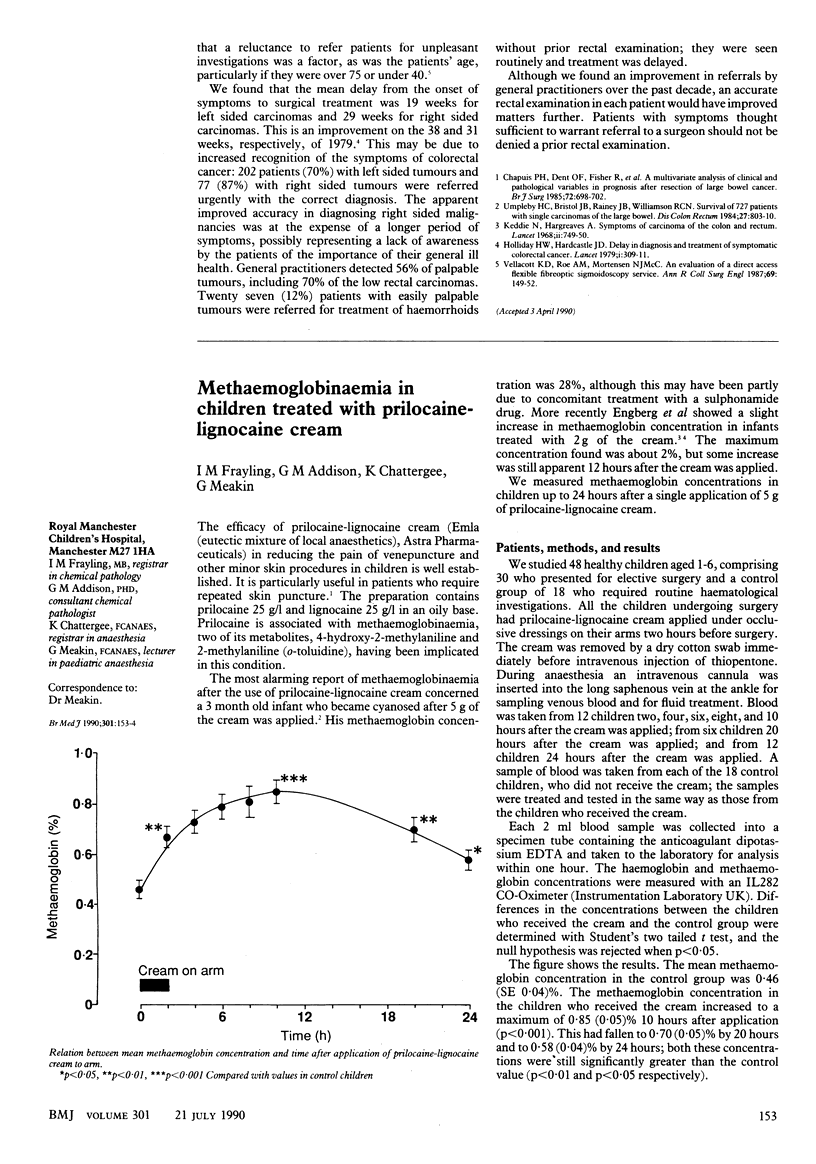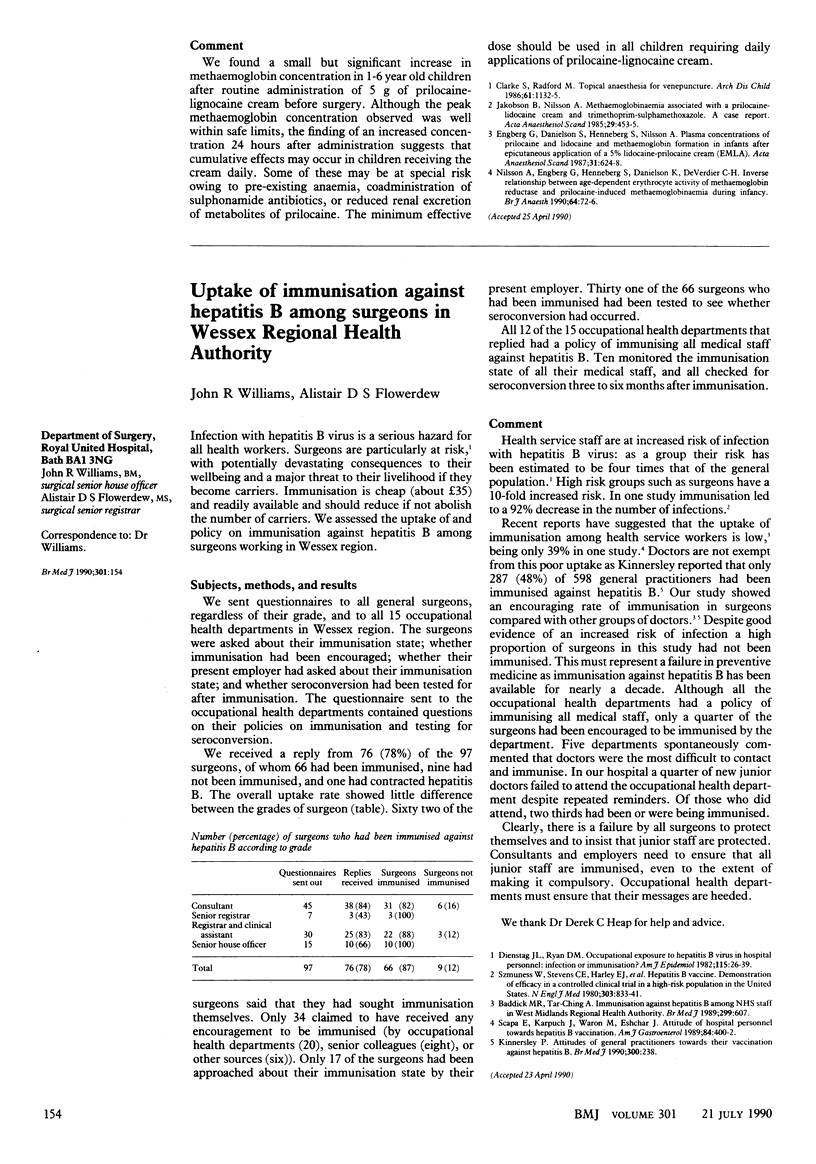Full text
PDF

Selected References
These references are in PubMed. This may not be the complete list of references from this article.
- Clarke S., Radford M. Topical anaesthesia for venepuncture. Arch Dis Child. 1986 Nov;61(11):1132–1134. doi: 10.1136/adc.61.11.1132. [DOI] [PMC free article] [PubMed] [Google Scholar]
- Engberg G., Danielson K., Henneberg S., Nilsson A. Plasma concentrations of prilocaine and lidocaine and methaemoglobin formation in infants after epicutaneous application of a 5% lidocaine-prilocaine (EMLA). Acta Anaesthesiol Scand. 1987 Oct;31(7):624–628. doi: 10.1111/j.1399-6576.1987.tb02633.x. [DOI] [PubMed] [Google Scholar]
- Jakobson B., Nilsson A. Methemoglobinemia associated with a prilocaine-lidocaine cream and trimetoprim-sulphamethoxazole. A case report. Acta Anaesthesiol Scand. 1985 May;29(4):453–455. doi: 10.1111/j.1399-6576.1985.tb02232.x. [DOI] [PubMed] [Google Scholar]
- Nilsson A., Engberg G., Henneberg S., Danielson K., De Verdier C. H. Inverse relationship between age-dependent erythrocyte activity of methaemoglobin reductase and prilocaine-induced methaemoglobinaemia during infancy. Br J Anaesth. 1990 Jan;64(1):72–76. doi: 10.1093/bja/64.1.72. [DOI] [PubMed] [Google Scholar]


